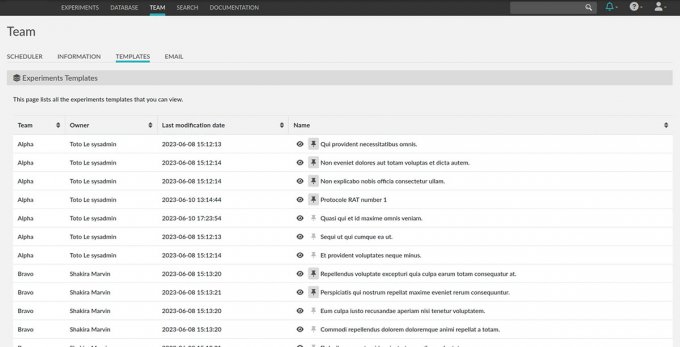From the notebook to the digital journal
"I can understand software development to some extent, but what exactly do you do beyond that?" is one of the questions we hear most often. That's why we took a look in our project box and picked out an interesting, classic digitalization project.
Senior Consultant Jörg is an "INOSOFT veteran" and has more than 20 years of experience in various processes in the pharmaceutical industry under the belt. This challenging project involved converting the laboratory reports, which were distributed across various systems and partly handwritten, to a central, digital solution.
Initial situation
In the laboratory, the heart of research, so to speak, the documentation of experiments plays a major role: paper and Excel spreadsheets are traditionally used to record and analyze data. However, planning an experiment in Excel is time-consuming and not very collaborative. Tracking experiments in a large number of Excel spreadsheets is practically impossible and error-prone, not to mention time-consuming.
Central system
Our task was to convert all existing recording and documentation systems and Excel spreadsheets to a central Electronic Laboratory Notebook - ELN.
Put simply, an ELN is a central database in which all laboratory data can be collected, organized and analyzed - in some cases even automatically. This ensures a high level of accuracy and allows laboratory staff and scientists to invest significantly more time in experiments.

Scientists used to use notebooks to record data from different lab instruments before manually transferring them to Excel spreadsheets and figuring out how to consolidate the different types of data. Transcription errors were often made, leading to incorrect data and occasionally to data loss, reports Jörg. An ELN eliminates the need for arduous manual transcription steps and prevents errors and data loss by integrating all laboratory equipment.
This should also facilitate collaboration between the participating research groups. The aim was to create the basis for the analysis and further utilization of the data through electronic availability - also with regard to results that may only emerge in the future.
Course of the project
A company-wide conversion of processes like this is a broad field and requires a great deal of thought and conceptualization until the requirements are clearly defined, Jörg continues. After all, this is a global project involving around 1,300 researchers worldwide.
How can I get the users on board? How do I formulate the requirements? It's all a long process, because a certain level of knowledge has to be reached first, he explains.
Finding suitable software and then configuring it to the company's structures was a real challenge. INOSOFT plays a central role here as an intermediary between the specialist department, the management and the software provider.
Conclusion
With the ELN, it is possible to integrate state-of-the-art data management techniques into the routine work of researchers and thus improve the data obtained and the quality of the information published.
The system also allows staff to collect data and track the progress of an experiment from anywhere in the world, enabling them to make important data-based decisions in real time.
The most important thing in such projects is to get the users on board, Jörg emphasizes. And this is only possible if you know the respective requirements and the individual level of knowledge and know where there are still hurdles that need to be overcome. The focus is therefore always on communication.
It's listening, understanding, advising and going all the way with the users.
11/15/2023 09:14am
Additional Information
